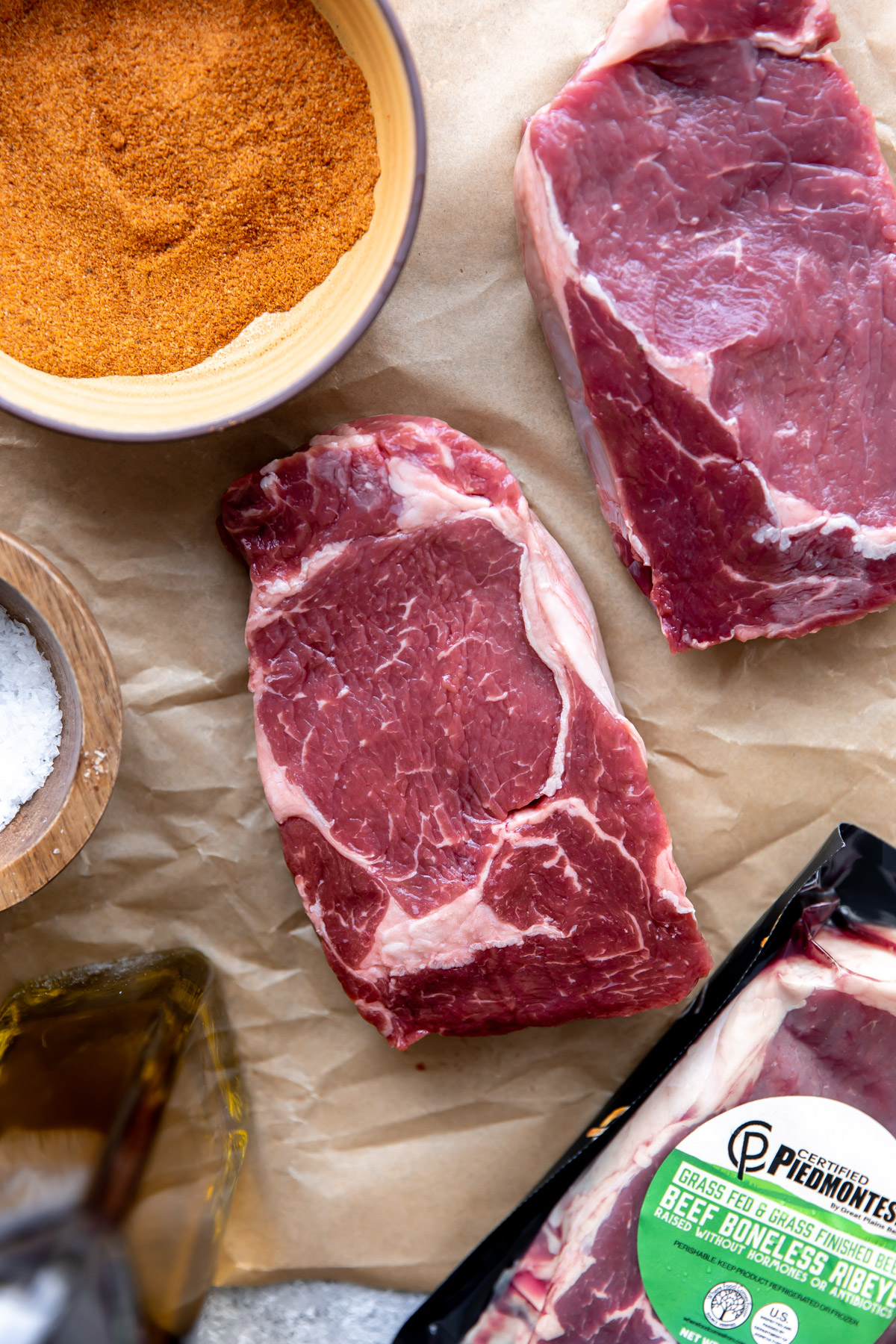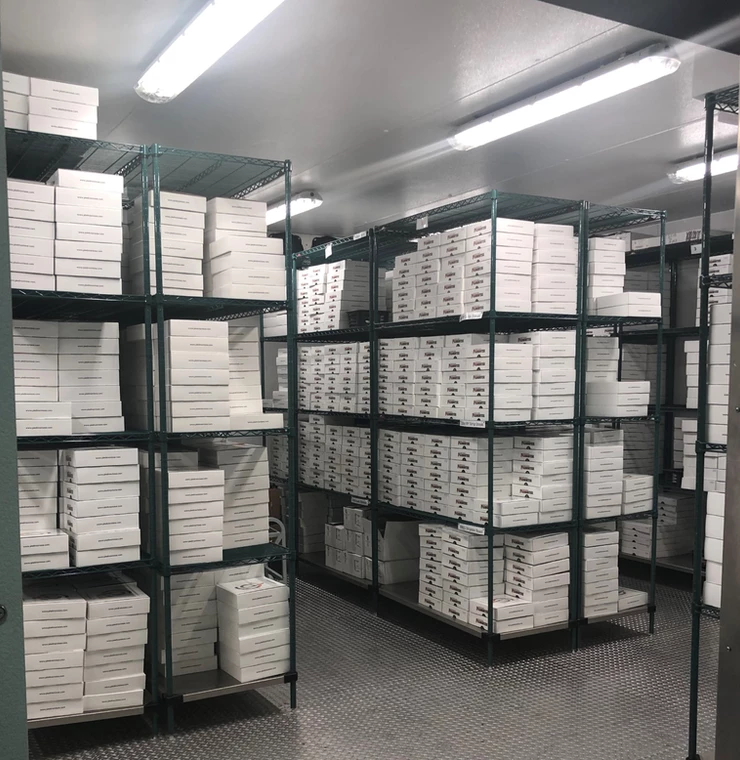Everything You Need to Know About Purchasing Frozen Beef
May 18, 2022

Purchasing frozen beef is different than buying beef at the grocery store. We wanted to address some questions and concerns about buying frozen beef, and help you have the most pleasant experience possible. We stand behind our product and processes and want you to know we will do what we can to ensure your experience with Certified Piedmontese Beef is as premium as our beef.
The product arrived defrosted. Is it safe to consume?
Your package is designed to arrive in frozen condition with our 2-day shipping. The dry ice used to keep the products frozen likely will have dissipated on arrival. If there is remaining ice in the cooler, use a towel to grab the ice and remove it from the cooler.*
If the product arrives partially defrosted, it is safe to put it in the freezer. We recommend over-wrapping the package in plastic wrap for more protection.
If the product arrives completely defrosted but is still cold to the touch, it is safe to refreeze. As with partially defrosted products, we recommend over-wrapping the package in plastic wrap.
However, if you do not feel that the product is safe to eat, we ask that you take pictures of the product and send an email to customerservice@piedmontese.com with your order number, name, and image of the product in question. We will work with you at that point to make it right. Upon receipt and review, we will send you a return label to have the product sent back to us.
*In some instances where UPS delays delivery, shipments arriving within 3-4 days still may arrive in good condition. You are welcome to call and check the status, and we can work with you to help track that package down.
What does the “Freeze-By” and “Use-By” date on the package mean?
Certified Piedmontese products are cut and frozen upon production, assuring elite freshness. The dates on our packaging reflect the date the product would need to be frozen to preserve freshness. Expected industry dates we use for ground beef and products with added ingredients (hot dogs, bratwursts, snack sticks, beef jerky, and summer sausage):
- A “Freeze-By” date indicates when a product should be frozen to maintain peak quality. It is not a purchase or safety date.
- A “Use-By” date is the last date recommended for the use of the product while at peak quality. The date has been determined by the manufacturer of the product.
Please refer to Freezer Burn and Freezer Storage Time for more information.
How do I safely thaw my beef?
We recommend two ways to defrost our beef: in the refrigerator or cold water.
Refrigerator
It's best to plan for slow, safe thawing in the refrigerator. Small items may defrost overnight, but most foods require two days. Large items may take longer, approximately one day (24hrs) for every 5 pounds of weight. Make sure your refrigerator’s temperature is at 40ºF when defrosting your beef. This helps keep bacterial growth to a minimum.
*We always recommend putting the item on a tray or plate to catch any drippings during the thawing process.
In Cold Water
Place food in a leak-proof plastic bag for faster thawing and immerse it in cold water. (If the bag leaks, bacteria from the air or surrounding environment could be introduced into the food. Tissues can also absorb water like a sponge, resulting in a watery product.) Check the water frequently to be sure it stays cold. Change the water every 30 minutes. After thawing, cook immediately.
What if there are holes in the packaging? Is the product still safe to consume?
When beef products leave our facility, we assure packaging is fully intact with no rips or tears. There may be instances where some holes or breaks in the packaging can occur due to frozen product shifting in the cooler during the shipping process.
If you notice that a package has accidentally been torn or has opened while food is in the freezer/frozen state, the food is still safe to use. Re-wrap it. It is safe to freeze meat or poultry directly in its original packaging; however, all packaging is slightly permeable to the air. Over-wrap these packages as you would with grocery store beef or any food for long-term storage or prolonged storage.
Is that blood dripping everywhere?
No. The red drippings you see coming off the beef are the liquid protein that delivers oxygen through the animal’s muscles, giving the meat its red color. This is called ‘myoglobin.’
You may notice a beef product turning slightly grey after sitting in the fridge for 3+ days. This does not render the beef inedible or unsafe; it’s just not very pretty to look at.
What about freezer burn? It should be thrown away…right?
Nope!
Contrary to popular belief, freezer burn does not make food unsafe; it merely drys in spots. It appears as grayish-brown leathery spots and is caused by air coming in contact with the surface of the food. Cut freezer-burned portions away either before or after cooking the food. Heavily freezer-burned foods may have to be discarded for quality reasons. This does not cause the product to be unsafe or inedible.
Rest assured, we do not send out “freezer burned” beef. You may over-wrap the product in its current packaging with plastic wrap for extra protection.
Freezer Storage Time
Because freezing keeps food safe almost indefinitely, recommended, storage times are for quality only. We recommend using your frozen beef within a year of purchase to assure the product is at its highest quality if it was kept at 0ºF, or colder, during this time.

References
USDA - https://www.fsis.usda.gov/wps/portal/fsis/topics/food-safety-education/get-answers/food-safety-fact-sheets/safe-food-handling/freezing-and-food-safety/ct_index